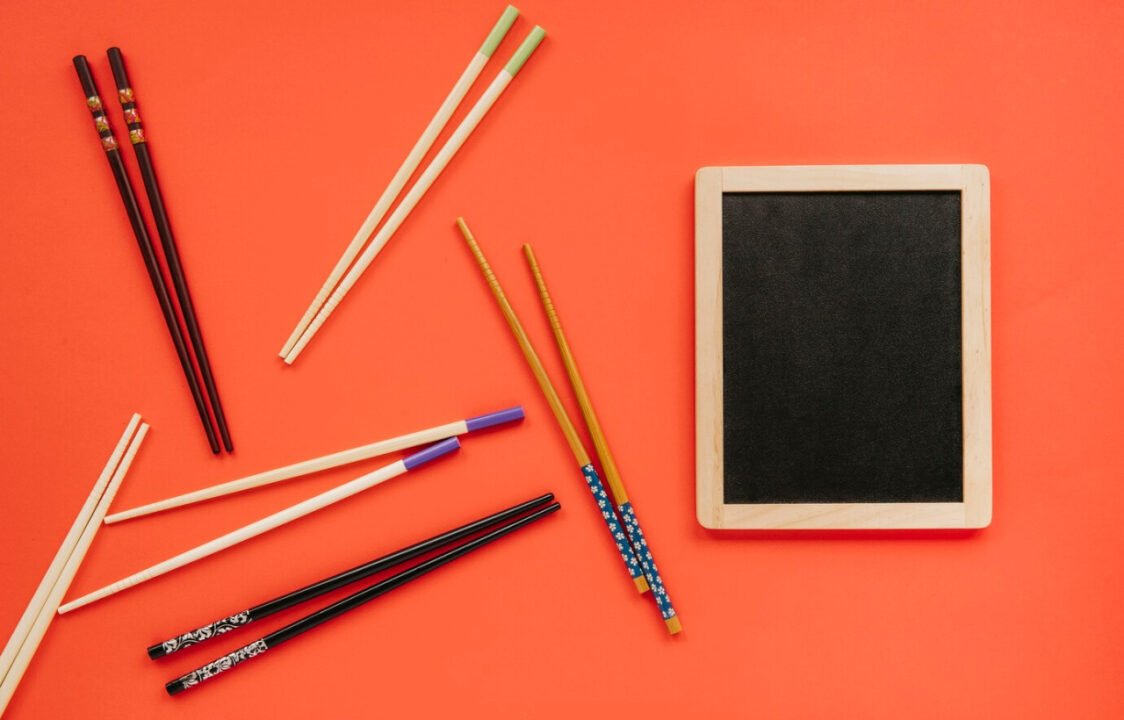Chopsticks hold a unique place in dining traditions across East Asia and beyond. More than just simple utensils, they reflect centuries-old cultural heritage and culinary techniques. Whether you’re new to using chopsticks or keen to explore their history and variations, this guide offers an in-depth look at everything you need to know about chopsticks, from their origins to practical tips for using them confidently.
The History and Cultural Significance of Chopsticks
Chopsticks have been essential in Asian culture for thousands of years. Believed to have originated in China nearly 5,000 years ago, chopsticks have evolved and spread through East Asia, reaching Korea, Japan, Vietnam, and other regions. Historically, they weren’t just for eating but were also used in rituals and cooking, reflecting the importance of dining etiquette and traditions in ancient societies.
You May Also Like: Darker Gray from F2F2F2: The Art of Creating Perfect Shades
In China, chopsticks represent harmony and balance, as they require coordination and precision to use effectively. The spread of chop-sticks coincided with the influence of Chinese culture on neighboring countries. By the 6th century, chopsticks were widely used across East Asia, each country developing its unique variations in material, shape, and length to suit their local cuisines and customs.
Differences in Chopstick Styles Across Cultures
Although chopsticks may look similar at a glance, each culture has developed unique styles that enhance the enjoyment of their specific cuisines. Let’s explore how chopsticks vary across different countries:
- Chinese Chopsticks: Typically longer (around 25-30 cm) and thicker, Chinese chop-sticks are often made of wood or bamboo. Their length allows for easy handling during family-style meals where dishes are shared.
- Japanese Chopsticks: Japanese chop-sticks are shorter and often tapered at the ends, making it easier to pick up delicate foods like sashimi. The Japanese use lacquered wood or bamboo, but disposable chopsticks, or “waribashi,” are also common.
- Korean Chopsticks: Korean chop-sticks are distinctive for being made from metal, often stainless steel, and are flat rather than rounded. This unique shape stems from a historical preference for metal utensils, with origins dating back to royalty.
- Vietnamese Chopsticks: These are longer and often made from lacquered wood or bamboo. In Vietnamese cuisine, chop-sticks are essential for handling noodles and other local dishes, enhancing the eating experience.
Each variation has evolved to meet the culinary needs of each culture, making chop-sticks more than just utensils—they are integral to the cultural identity and traditions of each country.
Materials Used in Making Chopsticks
Chopsticks can be crafted from various materials, each adding distinct characteristics to the dining experience. Materials range from traditional wood and bamboo to more contemporary options like plastic, stainless steel, and even jade.
- Wood and Bamboo: The most popular material, especially in Chinese and Japanese chopsticks. They are biodegradable, lightweight, and provide a comfortable grip.
- Metal: Commonly used in Korea, metal chopsticks are durable and resistant to heat. However, they can be slippery for beginners and require more skill to use effectively.
- Plastic: Often used for disposable chop-sticks, plastic versions are affordable and lightweight. They are ideal for travel or quick dining but are not considered eco-friendly.
- Ivory, Jade, and Precious Metals: Some high-end chop-sticks are made from luxury materials, often used for special occasions or gifts. While not practical for everyday use, they reflect status and artistry.
The material chosen often reflects the eating habits and environmental values of each culture, making chopsticks a window into cultural preferences and practices.
The Art of Using Chopsticks Properly
Learning to use chop-sticks can be intimidating for beginners, but with practice, the technique becomes second nature. Here is a step-by-step guide to using chopsticks effectively:
- Grip the First Chopstick: Place one chop-stick in the V of your hand, resting it on the ring finger. This chopstick will remain stationary.
- Hold the Second Chopstick: Grip the second chop-stick like a pencil, positioning it between your thumb, index, and middle fingers. This chopstick will do most of the movement.
- Practice Moving the Top Chopstick: Move the upper chop-stick by flexing your index and middle fingers, while keeping the bottom one stable. This coordination is the key to picking up food accurately.
- Mastering the Pinch: Once you feel comfortable with the movement, practice picking up small items, such as grains of rice or beans. This will build your confidence and precision.
Although the process may feel challenging initially, patience and practice will improve your chop-stick skills. Chopsticks offer a rewarding dining experience once mastered, bringing you closer to East Asian culinary traditions.
Etiquette Rules for Chop-stick Use
Chopsticks come with an unwritten code of conduct, especially in formal dining situations. Observing these etiquette rules can show respect for cultural traditions and make dining a pleasant experience for all.
- Avoid Pointing: Do not point with chopsticks, as it can be seen as impolite or disrespectful.
- Don’t Stick Chop-sticks Vertically in Rice: This gesture resembles incense used in funerals and is considered a bad omen.
- Avoid Passing Food from Chop-stick to Chopstick: This action also resembles a funeral practice and should be avoided in all dining contexts.
- Use the Wide End for Serving: If sharing food, it is polite to use the back end of your chopsticks to take food from communal dishes.
These customs ensure that dining with chopsticks remains respectful and reflects the shared values of East Asian cultures.
Health Benefits of Using Chopsticks
Eating with chopsticks offers some surprising health benefits beyond cultural appreciation. Unlike a fork or spoon, chopsticks naturally encourage slower eating, which promotes better digestion and helps prevent overeating. Using chopsticks also enhances fine motor skills, as they require precise hand-eye coordination and dexterity.
Studies have even suggested that the use of chop-sticks can support cognitive health, particularly in elderly populations. Chop-stick use involves motor skills and concentration, making it a mindful eating practice. This link between chopsticks and health highlights the value of traditional practices for physical and mental well-being.
Environmental Impact of Chop-sticks
As chopsticks are widely used across the globe, concerns have arisen about their environmental impact, particularly with disposable chopsticks. In many countries, millions of disposable chop-sticks are used daily, creating considerable waste.
Several initiatives have been launched to address this issue, including programs encouraging the use of reusable chopsticks. Some companies have developed eco-friendly chop-sticks made from recycled materials or sustainable bamboo sources. By choosing reusable chop-sticks, diners can enjoy their meals while reducing their environmental footprint.
Common Challenges When Using Chopsticks and How to Overcome Them
Learning to use chop-sticks may be challenging initially, but understanding common pitfalls can make the process easier. Beginners often struggle with maintaining a steady grip or picking up small or slippery foods.
To overcome these challenges, try starting with thicker foods like vegetables or sushi, which are easier to pick up. Practicing with foods that don’t roll or slip can help build confidence and improve technique. Additionally, taking smaller portions on the chopsticks can give more control.
Innovative Variations of Chop-sticks
Modern innovations have led to the creation of new types of chopsticks aimed at enhancing the dining experience. Here are some unique adaptations:
- Training Chopsticks: For beginners, training chopsticks with finger rings can help users practice grip and movement.
- Children’s Chopsticks: Child-friendly chop-sticks often come with cute designs and are easier to hold, making dining fun for kids.
- Reusable and Collapsible Chop-sticks: Eco-conscious chop-sticks are collapsible for easy portability, and reusable ones made from sustainable materials are becoming increasingly popular.
These innovations make chop-sticks accessible to all and cater to a growing demand for environmentally friendly dining tools.
Chopsticks in Modern Dining Culture
Today, chopsticks are used far beyond East Asia, reflecting their global appeal. Many Western restaurants, especially those serving Asian cuisine, offer chop-sticks to enhance the authenticity of the dining experience. This popularity showcases how a humble utensil has transcended cultural boundaries to become a universal tool, appreciated by diverse cultures worldwide.





